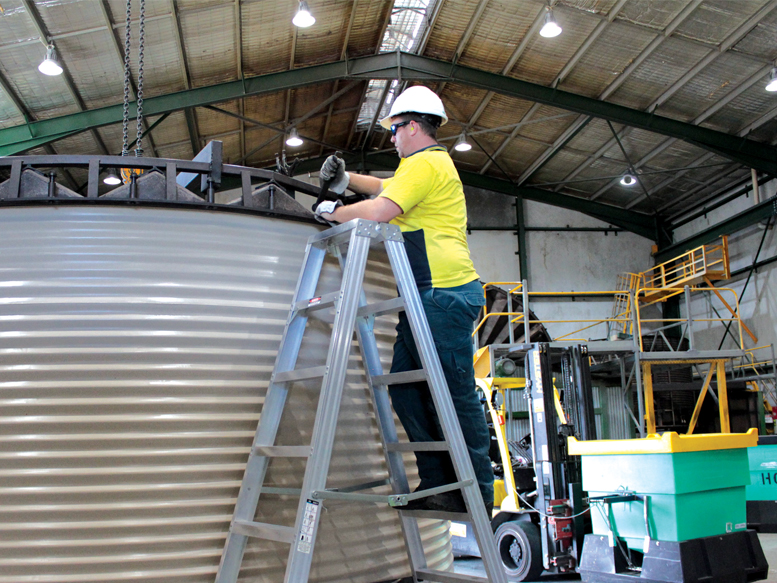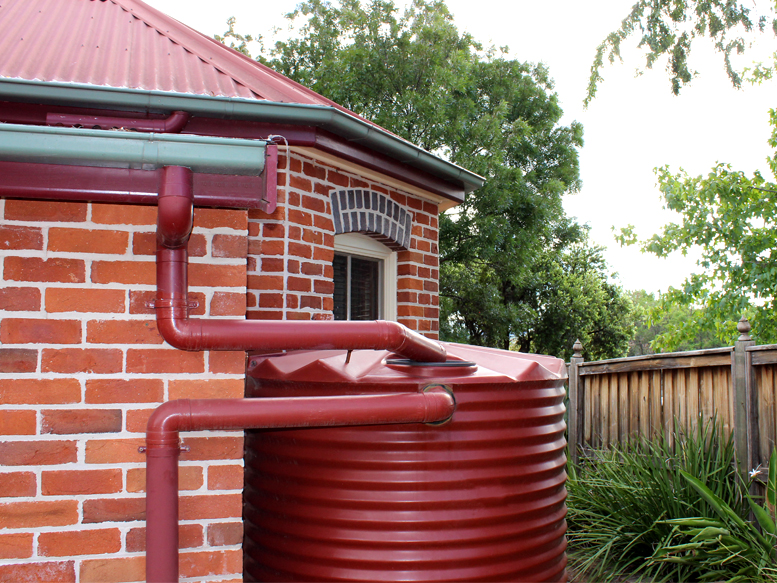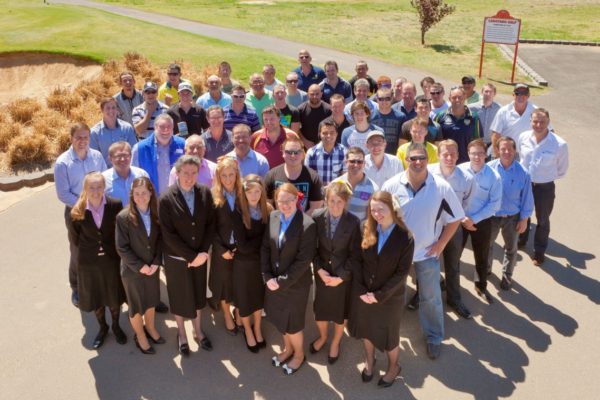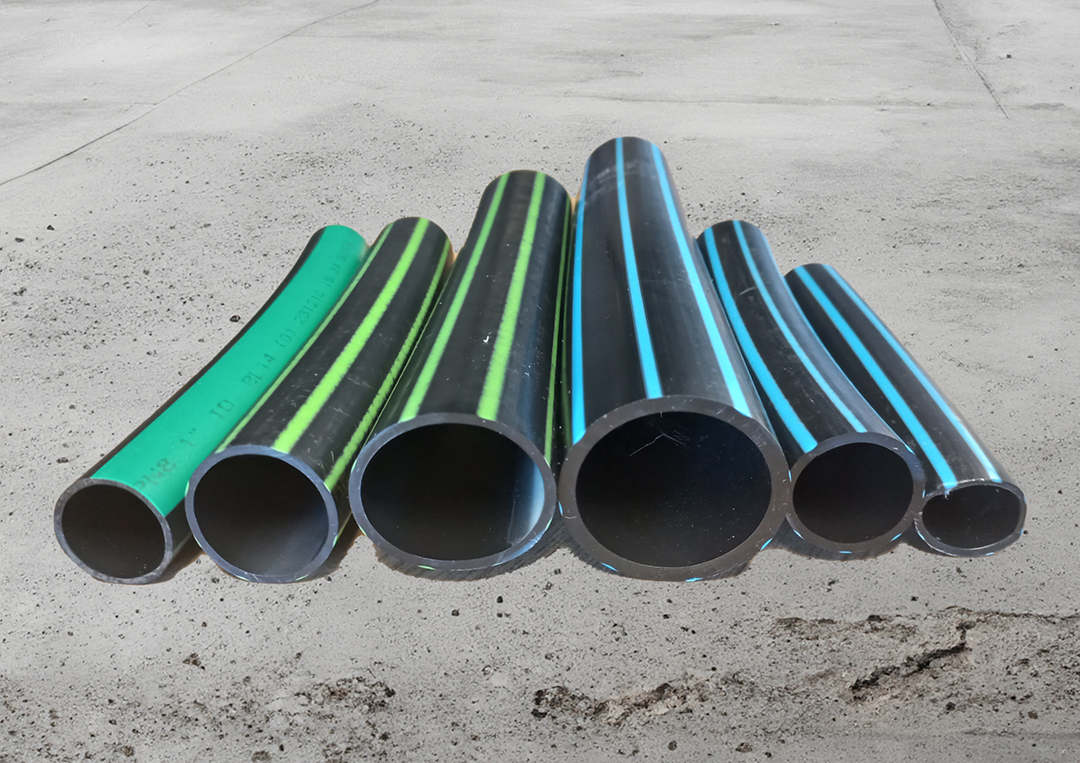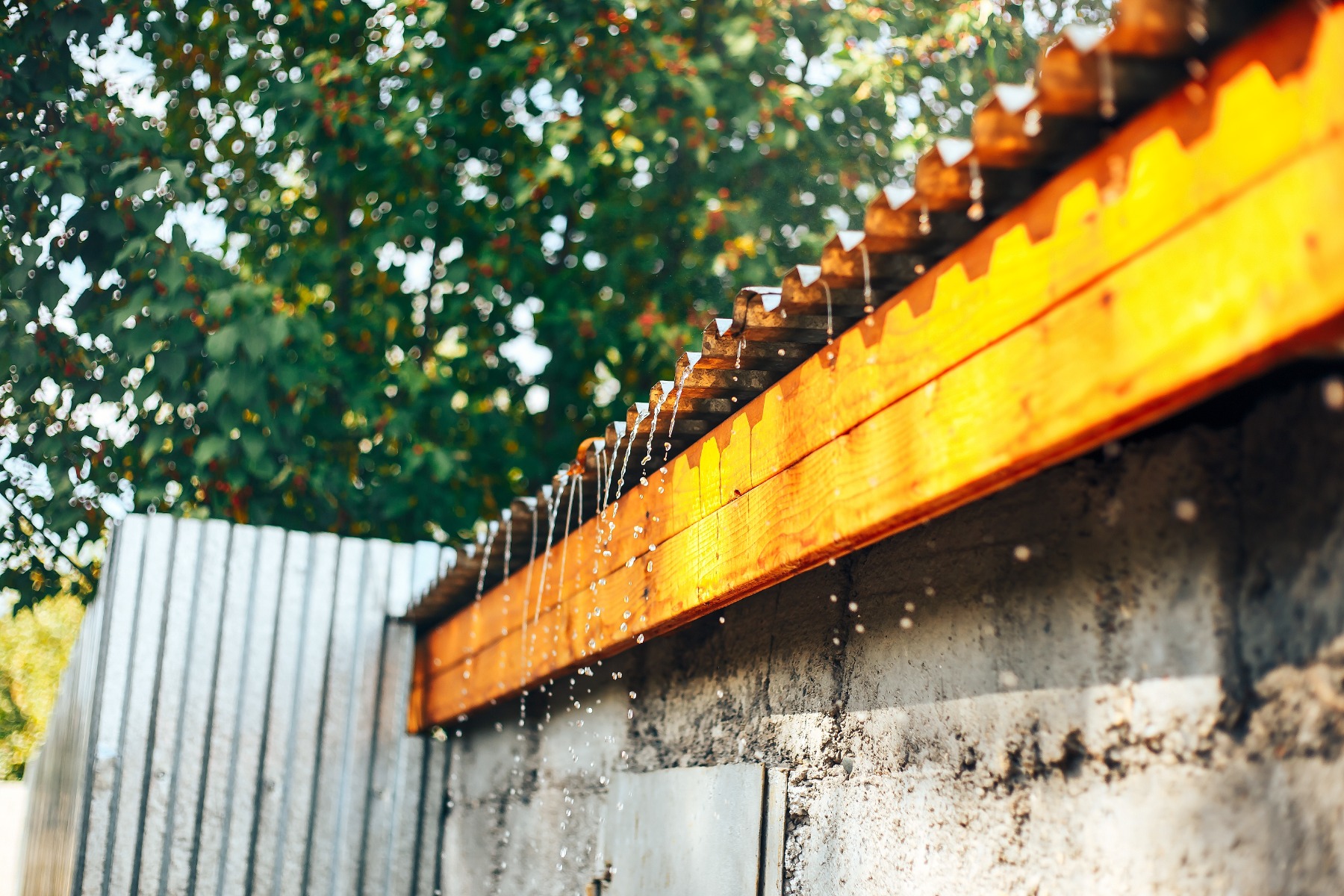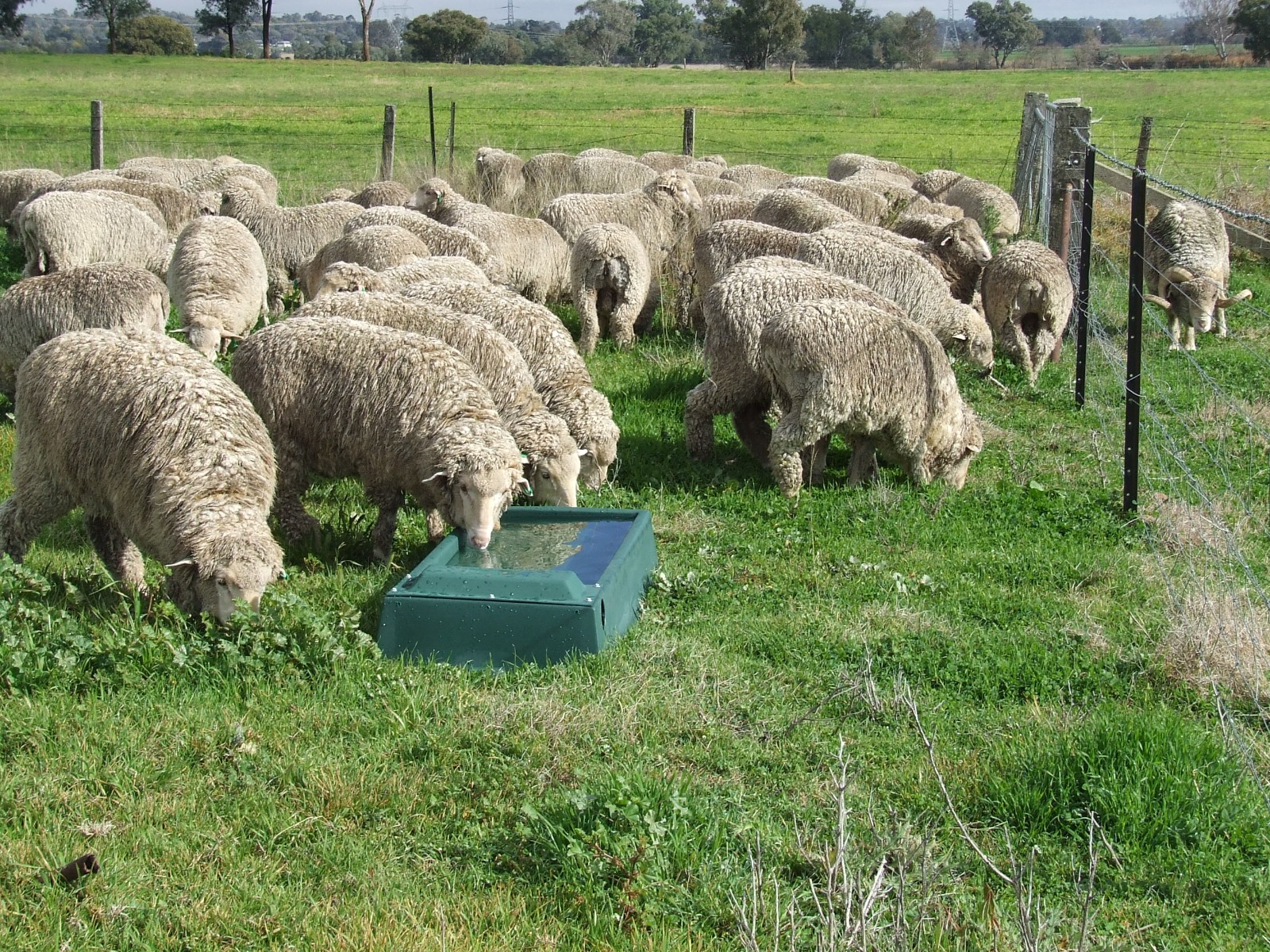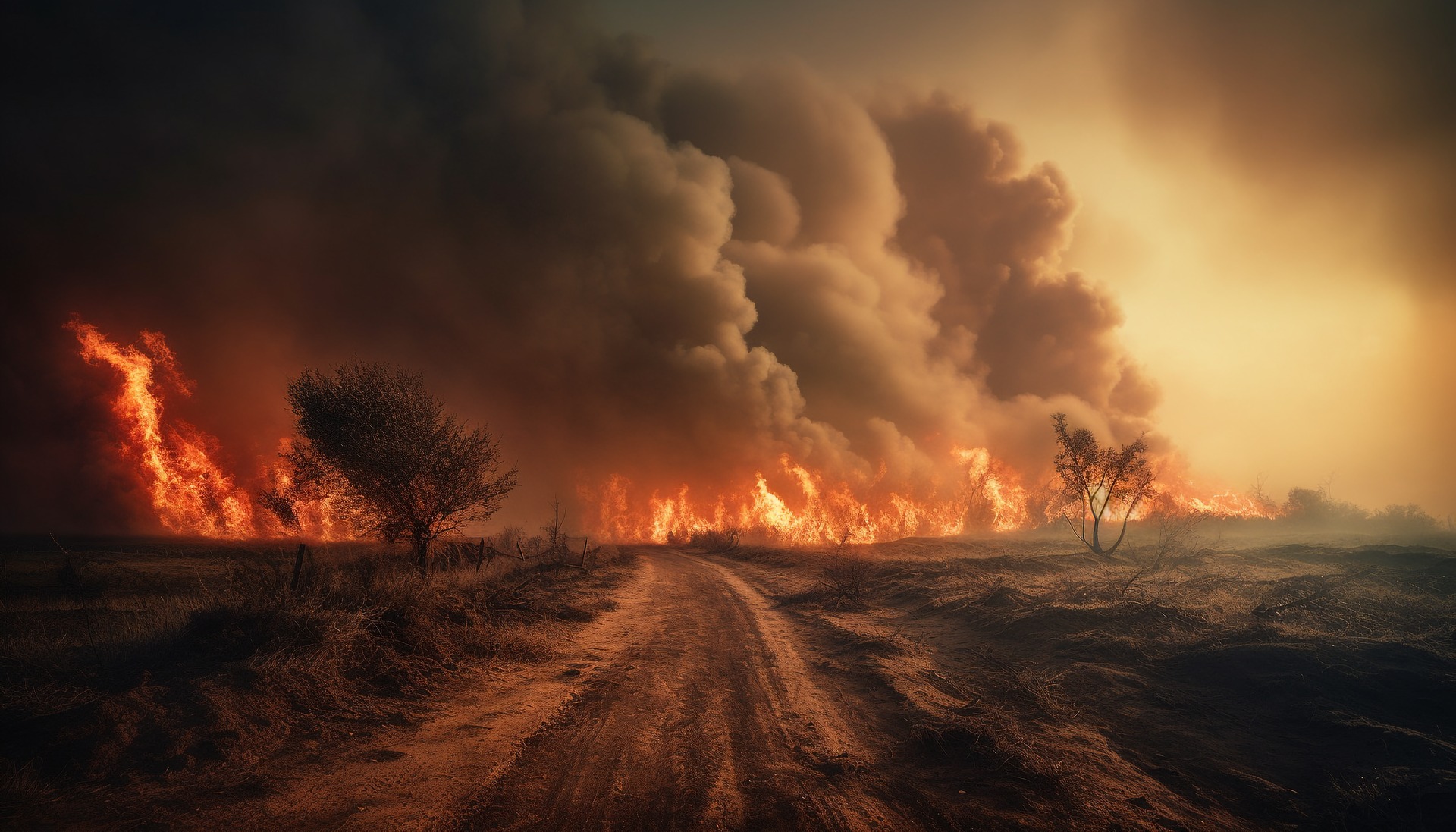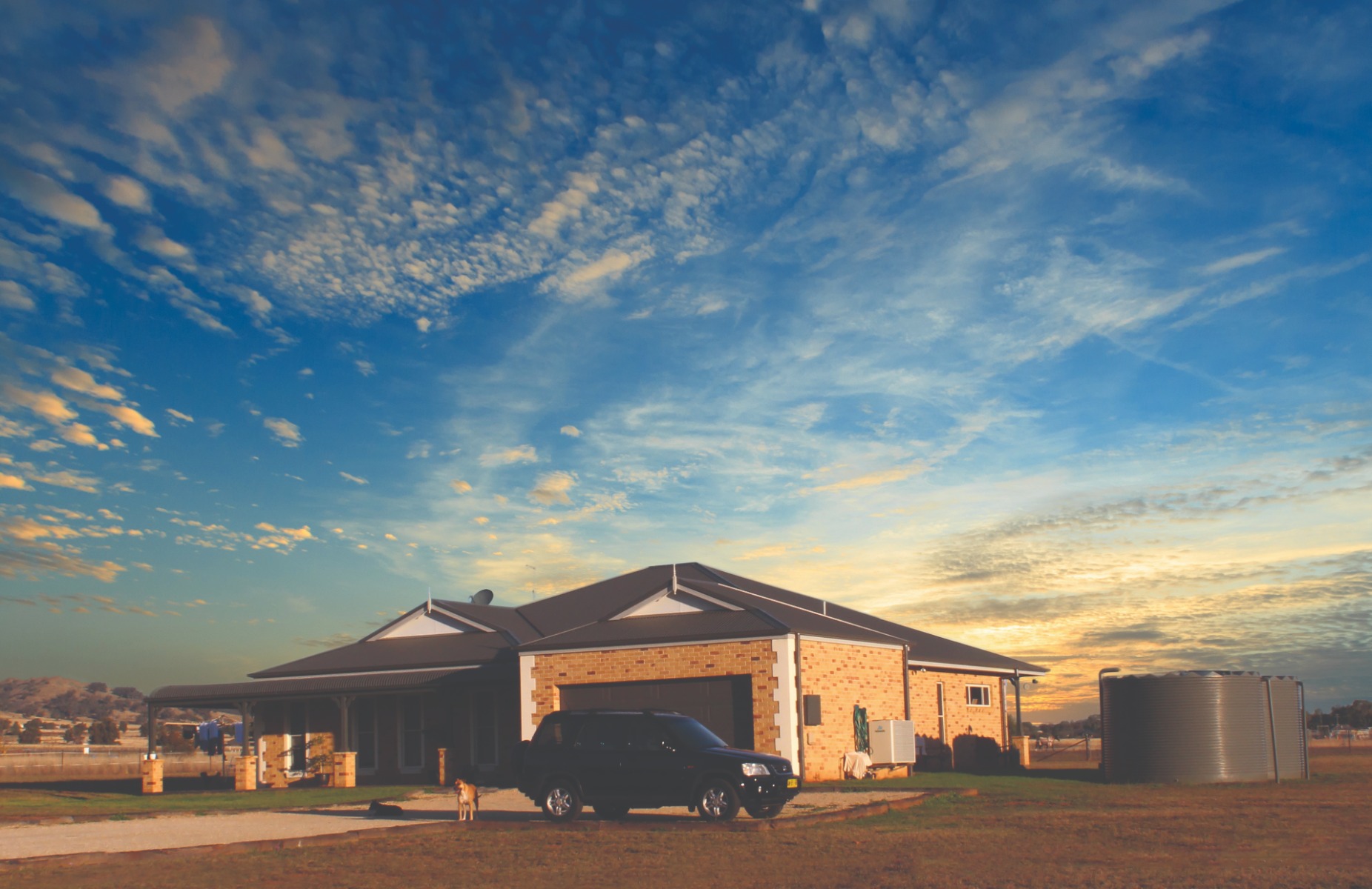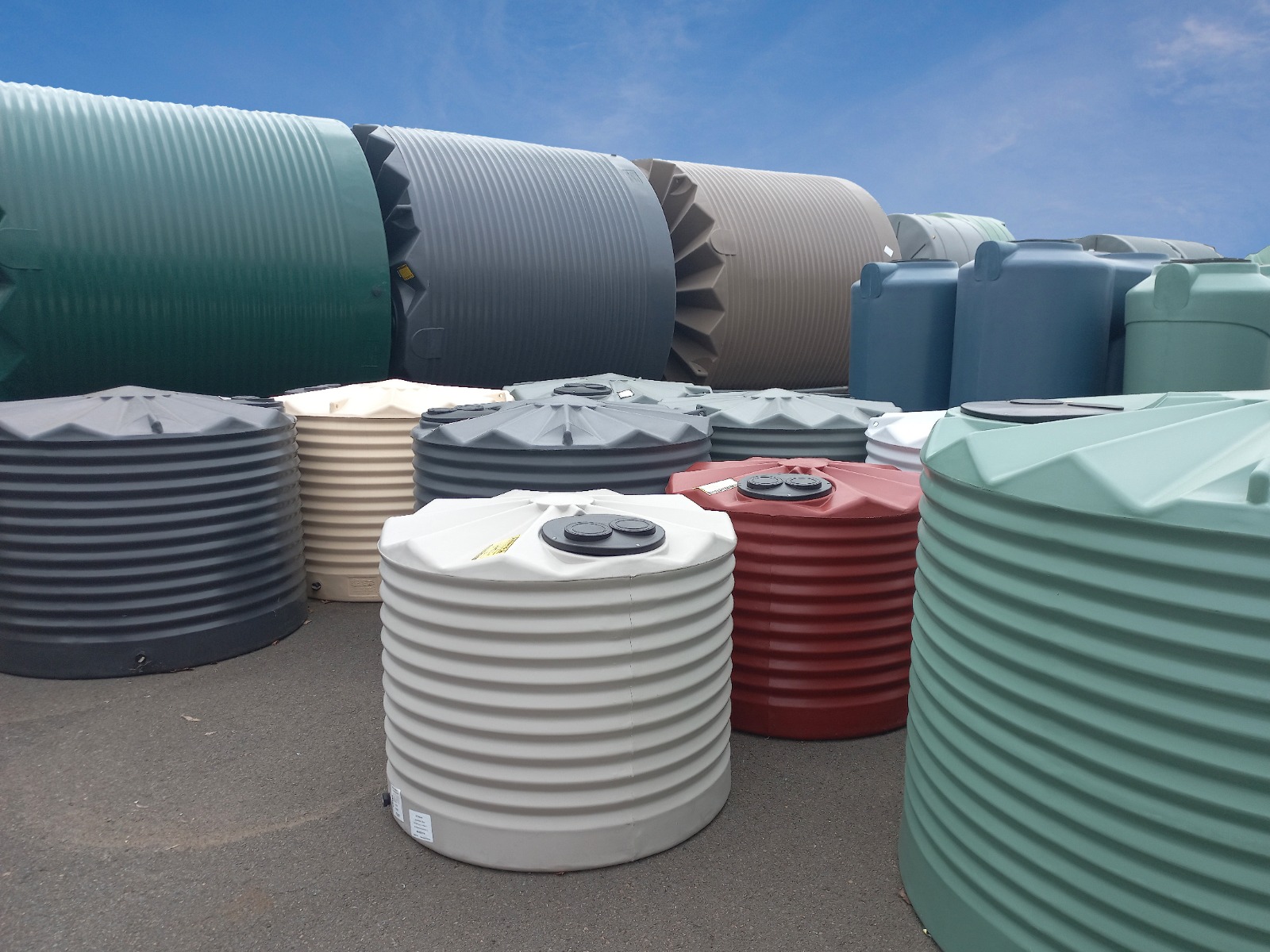In this blog, we examine the materials that are used to construct water tanks and look at some of the pro’s and con’s of each:
Polyethylene (or ‘Poly’) water tanks
Made from food-grade polyethylene which is considered to be the safest form of plastic, ‘poly’ is one of the most popular materials for manufacturing water tanks, and it has quickly become the product of choice in Australia.
Poly tanks are strong, lightweight and durable, and can be formed into a wide variety of sizes and styles. Tanks are available in many colours and the addition of UV stabilisers during production ensures that the tank retains its as-new condition for many years.
Poly tanks are resistant to bumps and light impacts, and while they might crack or puncture with heavier impacts, they are generally easily repairable.
Poly tanks are inert and being food-grade, do not need the liners that are required in many other tanks. They are not damaged by corrosive water, which makes them especially suitable for bore or dam water applications.
As poly tanks are available in all shapes and sizes, they are suitable for a very wide range of applications from small slimline tanks for urban use to 32,000 litre tanks for agricultural and industrial use. Being lightweight, poly tanks are easily transported, handled and requiring only a stable flat spot and installation is straightforward.
Galvanised steel water tanks
The traditional Australian water tank is constructed of corrugated galvanised steel which is coated both inside and outside with zinc to prevent corrosion. Galvanised tanks are susceptible to attack by corrosive bore or dam water and over time, galvanised steel will rust and corrode, and many galvanised tanks are offered with a protective liner of food-grade polyethylene.
Modern steel tanks are often made of Aquaplate® - a laminate consisting of a galvanised formable steel and a specially formulated food-grade polymer film, designed to meet the stringent quality requirements necessary for the storage of drinking water. There are a number of specific precautions that need to be taken to protect the polymer layer on Aquaplate® tanks. If the coating is damaged, it should be repaired immediately to prevent corrosion of the metal portions of the tank. Providing however the coating does not get damaged, Aquaplate® tanks are very durable.
Steel is the material of choice for large capacity tanks and on-site builds, and steel tanks can be built to hold millions of litres of water which makes them a suitable solution for extremely large storage requirements.
Copper or copper alloy fittings (brass and bronze) should not be connected directly to steel tanks as this causes corrosion, and plastic pipe fittings should be used.
Stainless steel water tanks
Some water tanks are made of stainless, not galvanised, steel, although these are generally smaller tanks for urban settings. The key advantage of stainless steel is much higher corrosion resistance than galvanised tanks coupled with ease of repair. As corrosion resistance is provided by the steel and not the coating, stainless steel tanks can be repaired by welding without the need for additional treatment.
Stainless steel is used in many food applications and is considered to be very safe for water storage purposes. Most stainless steel tanks are small, so delivery and installation is generally straightforward, but the product is expensive and stainless steel tanks are costly.
Concrete water tanks
Concrete tanks are strong and durable and have proven popular for agricultural and industrial applications as they don’t rust, burn or melt, and they can be installed either above or below ground. Concrete tanks have been a popular choice for storing drinking water as the thermal mass of the tank ensures stable water temperature.
Unfortunately, the introduction of reinforcing steel into concrete has affected the durability of concrete tanks. Concrete is porous and tank water will eventually corrode the reinforcing steel which can cause the concrete to crack and break and provide an easy pathway for water leakage. If they do get damaged, concrete tanks may be difficult to repair effectively.
To prevent this, concrete tanks are often lined with a plastic to prevent water contacting the reinforcing steel, and when properly lined and maintained, concrete tanks can prove to be durable and long lasting.
Small capacity tanks can be fabricated offsite and delivered ready for use but larger tanks over 15,000 litres need to be cast on-site and pad preparation is critical as an unstable tank may crack. Moving an old and disintegrating tank is often a job for heavy machinery, so the cost of removal may be considerable.
Fibreglass water tanks
Fibreglass is made from extremely fine fibres of glass that reinforce a polymer and the resulting composite material is known as glass-reinforced plastic (GRP).
At their best, fibreglass tanks are robust and quite impact resistant, but the quality of a fibreglass tank depends on its maker and there may be significant variations in quality. Fibreglass tanks are relatively light weight but are stiff and rigid, making them quite brittle and prone to cracking. They also allow more light entry and are often darker coloured to reduce algae growth. If damaged however, they are relatively easy to repair and fibreglass repair kits are widely available.
Fibreglass tanks contain polyester resin and other products such as catalysts to make the resin set and need a food-grade coating to satisfy Australian standards for water storage, usually a flexible inner liner or internal coating.
Rapid Plas have been producing poly water tanks in Tamworth for 30 years.
Rapid Plas have utilised nature’s strongest geometric shape – the triangle - in its unique Crown ForceTM design to create the worlds’ best poly water tank. This is not simply an upgrade of the renowned Rapid Plas water tank range; Crown ForceTM is a completely new tank that incorporates new technology, new engineering and new chemistry.
The result – the classic look and timeless beauty of an Australian corrugated tank but incorporating the most up-to-date engineering, manufacturing and chemistry to produce the best-ever poly water tank and a new era in rainwater storage.
If you want to know more about the best-ever poly water tank, talk to our expert team on 1800 816 299 or email sales@rapidplas.com.au with your enquiry.


